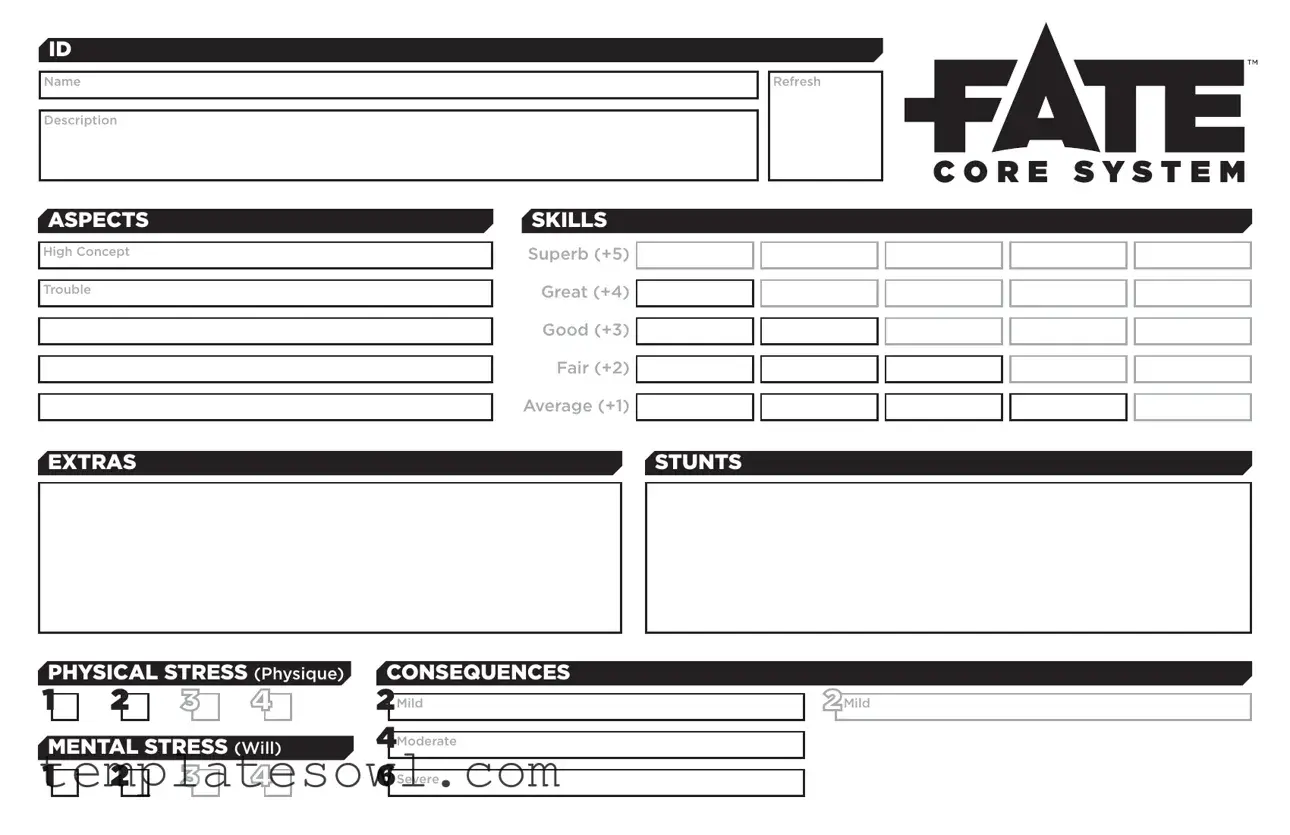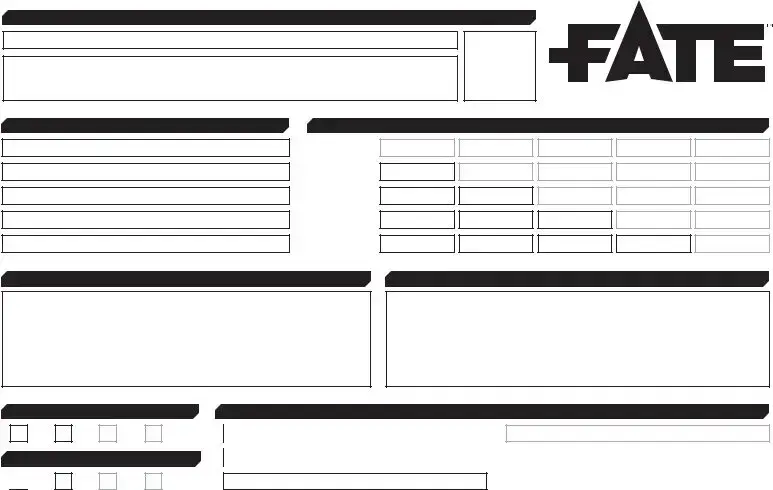What is the purpose of the Fate Character Sheet?
The Fate Character Sheet serves as a comprehensive tool for players to create and manage their characters in the Fate role-playing game. It allows players to outline their characters' abilities, traits, and stories, providing a structured way to engage in this imaginative storytelling experience.
What are 'Aspects' and how do they function in gameplay?
Aspects are essential character traits that define who your character is and what they struggle with. Each character has a 'High Concept' that summarizes their core identity and a 'Trouble' aspect that highlights a specific challenge or flaw. During gameplay, these aspects can be invoked to gain advantages or create interesting narrative twists.
What are 'Extras' on the character sheet?
Extras provide additional unique abilities or features that enhance your character’s gameplay. They can range from magical powers to specialized skills. Including extras can make your character more versatile and interesting, offering new ways to interact with the story and other characters.
How are skills ranked on the Fate Character Sheet?
Skills are rated using a tiered system that ranges from 'Average' to 'Superb,' with corresponding numerical values. Each skill level indicates your character's proficiency in various actions, affecting how well they can perform tasks in these areas during the game. This ranking allows for strategic choices in character development and role-playing.
What is the significance of 'Stunts' in the character sheet?
Stunts provide specific advantages that allow players to perform actions beyond standard capabilities. They often offer bonuses, special abilities, or unique effects that can turn the tide of gameplay. Utilizing stunts creatively can enhance both the character's effectiveness and the overall enjoyment of the game.
Can you explain the Physical Stress section?
The Physical Stress section tracks the character's resilience to physical challenges and dangers. Players can take on stress marked by levels, which indicates how much damage a character can sustain before facing consequences. Knowing how stress impacts your character is crucial for managing their safety during gameplay.
What does the 'Consequences' section represent?
Consequences illustrate the long-term impact of stress, both physical and mental. They are categorized into Mild, Moderate, and Severe, indicating the severity of injuries or challenges your character faces after taking physical or mental stress. This section helps players strategize how to cope with adverse situations.
How is mental stress represented on the character sheet?
Similar to Physical Stress, the Mental Stress section reflects the character's vulnerability to psychological challenges. Players must be aware of their character's mental health and manage stress effectively, as it can lead to consequences that significantly affect gameplay and character development.
What is meant by 'Refresh' in the character sheet?
Refresh determines the level of resources or capabilities your character can regain during the game. Tracking refresh allows players to manage how often they can invoke aspects or utilize stunts, ensuring a balance between powerful moves and the sustainability of character actions throughout the session.
How should I fill out the Fate Character Sheet?
Begin by defining your character's identity through the High Concept and Trouble. Move on to select skills that reflect their strengths, then fill in other sections like Extras and Stunts. Regularly update the Physical and Mental Stress sections as gameplay progresses. Each part of the character sheet contributes to enriching your role-play experience.



 2
2